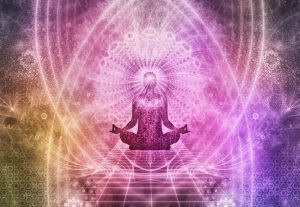Being a bit more zen can help you get through the day
More people than ever are suffering will ill mental health, due to the ongoing covid pandemic and other associated problems. Learning a technique that can help you feel more chilled and more zen can really make a difference. Learning to meditate can reduce stress, decrease anxiety and improve mood. Scientific evidence show that meditation can be helpful in fighting illness, including depression, heart disease and chronic pain.
Trying to reach a state of zen when your messages keep bleeping and someone wants your focus, or kids want your attention is a challenge at the best of times, but with everyone in the house trying to stay busy or keep working is particularly challenging. There are a variety of different meditation styles and finding the right one for you can be a bit of a minefield, so here is a simple guide to help you decide which one is right for you.
History
The far eastern countries are well known for being zen. Of course that is where the word comes from. It literally means meditation. See this article in wikipedia for more information. Meditation was first developed in India possibly since 5000BC. The oldest documented evidence is wall art in the Indian subcontinent from about this time, showing people seated in meditative postures with half-closed eyes. During this time and for centuries before, all learning and knowledge was passed on by word of mouth. Almost all the Hindu religious books talk of meditation in some form or the other. So we can safely assume that meditation was also an integral part of the knowledge that the Gurus were teaching their students, and all this was done via the oral tradition. And because it was oral, it is not documented and hence gets very difficult to tell how old meditation really is.
Meditation is the practice of thinking deeply or focussing ones mind for a period of time. This can be done in silence or with the help of chanting or other aids. Lets have a look at a few different practices, old and new.
1. Mindfulness
Mindfullness meditation is very zen and very now! It is all about being aware and present and in the moment. It can be done anywhere. You might prefer to find a quiet spot and sit with your eyes closed, focussing initially on your breath and then just noticing what you notice. Allowing sounds to pass you by without judgement. Perhaps while you are running or walking you find yourself in flow, which is another way of thinking about meditation. (In positive psychology flow or a flow state, or in the zone. Characterised by the complete absorption in what one does, and a resulting transformation in one’s sense of time. Named by by Mihály Csíkszentmihályi in 1975).
A form of mindfulness is involved in most kinds of meditation. Breath awareness encourages you to be aware of your breathing, while progressive relaxation draws attention to areas of tension in your body.
2. Loving-Kindness Meditation
A particularly good one to include to help you be a bit more zen is kindness. The goal of this meditation is to cultivate an attitude of love and kindness toward everything. Cultivating kindness towards oneself is really important for good mental wellbeing. While breathing deeply, open your mind to receiving loving kindness, then send of loving kindness out to others. You can focus on specific people or situations if you wish. Repeat the message over and over.
It can help dispel feelings of anger, frustration, resentment and conflict and increase positive emotions.
3. Body scan or progressive relaxation
Body scan or progressive relaxation meditation, is where you sit in a relaxed comportable position and can your body for areas of tension. The goal is to notice tension and to allow it to release. It is challenging to instantly obtain relaxation so purposfully tensing the area and then relaxing helps send the right messages to the muslces to relax. Start with your feet and work up the body.
Progressive relaxation can help invoke feelings of calmness and relaxation. It may also help with pain, because it slowly and steadily relaxes the body, some people use this form of meditation to help them sleep.
4. Guided Meditation
Guided meditations can be very helpful in many situations. Having something to specifically focus on to guide you through can help you relax and focus. It can invoke sounds, textures and images though use of words, music, sounds of nature or bells, chanting and many more. Guided meditations can also be used to focus on specific issues like improving self confidence, weight loss, general relaxation any many more. It is just a case of finding the one or ones that appeal to you. I know quite a few people use the headspace app. This can be a great place to start.
5. Breath awareness meditation
Breath awareness is a type of mindful meditation that encourages mindful breathing. Breathe slowly and deeply, counting your breaths or otherwise focusing on you breath. You can use sspecific sounds repeated in your head as you breathe in and out. So hung works very well and one I use personally. The goal is to focus only on breathing and to ignore other thoughts that enter the mind. A way to do this is acknowlege them and promise to focus on them later so you can move on.
As a form of mindfulness meditation, breath awareness offers many of the same benefits as mindfulness. Those include reduced anxiety, improved concentration, and greater emotional flexibility.
6. Yoga Meditation
The practice of yoga dates back to ancient India. There are a wide variety of classes and styles of yoga, but they all involve performing a series of postures and controlled breathing exercises meant to promote flexibility and calm the mind. The poses require balance and concentration.
it is a physically active form of meditation that blends movements with deep breathing and mantras. People usually learn from a teacher or do a class. However, someone can learn the poses and mantras at home, although best to have a check in with your GP first. It can improve physical strength and reduce pain. It may also improve mental health by reducing anxiety and depression.
7. Zen meditation
Zen meditation is a form of meditation that can be part of Buddhist practice. Usually studied with the guidance of a teacher because it involves specific steps and postures. The goal is to find a comfortable position, focus on breathing, and mindfully observe one’s thoughts without judgment.
Again, this form of meditation is similar to mindfulness meditation but requires more discipline and practice. People may prefer it if they are seeking both relaxation and a new spiritual path.
8. Chakra Meditation
Chakra is an ancient Sanskrit word that translates to “wheel,” and can be traced back to India. Chakras refer to the centers of energy and spiritual power in the body. There are thought to be seven chakras. Each chakra is located at a different part of the body and each has a corresponding color.
Chakra meditation is made up of relaxation techniques focused on bringing balance and well-being to the chakras. Some of these techniques include visually picturing each chakra in the body and its corresponding color. You may may choose to light incense or use crystals, color coded for each chakra to help you concentrate during the meditation.
9. Transcendental Meditation
Transcendental Meditation is a spiritual form of meditation where practitioners remain seated and breathe slowly. The goal is to transcend or rise above you current state of being. You focus on a mantra or a repeated word or series of words determined by your teacher or perhaps you choose your own. This more contemporary version is not technically Transcendental Meditation, though it may look substantially similar. A practitioner might decide to repeat “I am not afraid of public speaking” while meditating.
People who practice Transcendental Meditation report both spiritual experiences and heightened awareness.
In Summary
The various meditative disciplines encourage a focus on heightened awareness, slower breathing, and increased acceptance. Meditation is not a results-focused undertaking. Indeed, fixating too much on the results can provoke anxiety that undermines the benefits of meditation.
Research shows that meditation can work very quickly. Many people who practice meditation report an immediate improvement following a meditation session. During meditation, it is common to feel calmer and less stressed. Over time and with practice, these sensations may continue outside of meditation sessions
There is no right or wrong way to meditate and nothing that says choose just one option. Any meditation is better than no meditation. If your only want to meditate once a week, do so. If you want to try different forms, do that too.
Meditating around the same time each day can make meditation a habit that is easy to incorporate into daily life. If meditation is helpful, it may be beneficial to increase the frequency to twice or more per day or to use it to reduce stress whenever needed.














